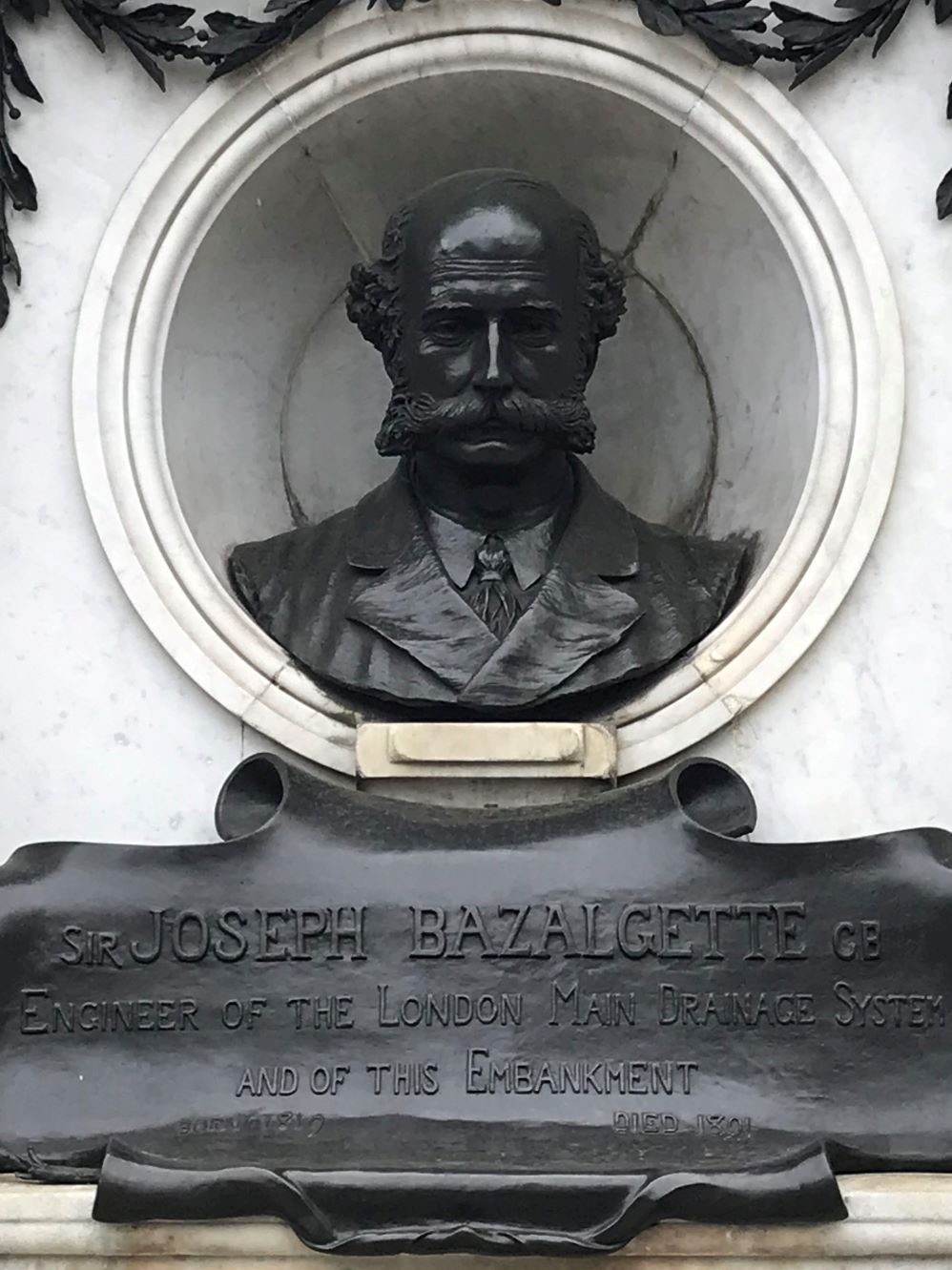
28 March 2021 was the 202nd Anniversary of the birth of one of the most important people in the shaping of modern London – the eminent civil engineer Sir Joseph Bazalgette.
We perhaps maybe know him best as the man responsible for the Thames Embankment and overseeing London’s sewerage system but he did so much more for the London we know today.
Born in Enfield, Middlesex in 1819, little is known about his early educational background other than the fact he was privately educated. He began his engineering career in Ireland in 1836 working on land reclamation works and drainage projects. He returns to a London engulfed in a series of cholera epidemics and with an antiquated and inadequate sewer system. People believed diseases such as cholera were carried by the air not by water and an overpopulated London of the mid-19th century has open sewers running alongside drinking water in many places.
He set up a consulting engineering practice in Westminster in 1842 then three years later Joseph Bazalgette got married to Maria Kough (at St Margaret’s in Westminster.) His practice is involved in canal projects and at Portsmouth Dockyard and he is also heavily involved in railway developments but overwork leads to a mental breakdown and recuperation for a year at Merton in Surrey. He returns to join the Metropolitan Commission of Sewers eventually becoming engineer in 1852. In 1855 comes the creation of the Metropolitan Board of Works (MBW) which is tasked to make sure that over a hundred square miles of London has the right roads, lighting, bridges, tunnels and crucially, sewers. Championed by fellow French descended engineering genius Isambard Kingdom Brunel, Joseph Bazalgette is elected on a salary of £1000 a year as its chief engineer. Over the next three decades, he will transform London.
The Thames Embankments
1858 is the year of ‘The Great Stink’ when a hot summer magnifies the stench of untreated human sewage overwhelming everyone including the Members of Parliament at Westminster where lime-soaked curtains fail to alleviate the smell. The legislation is quickly passed that enables Bazalgette to implement his solution of embanking the Thames in Central London and work began on 31 January 1859. The southern sections (Albert Embankment) were completed in 1868 but the more complex northern sections are finally complete in 1874 (Chelsea Embankment)
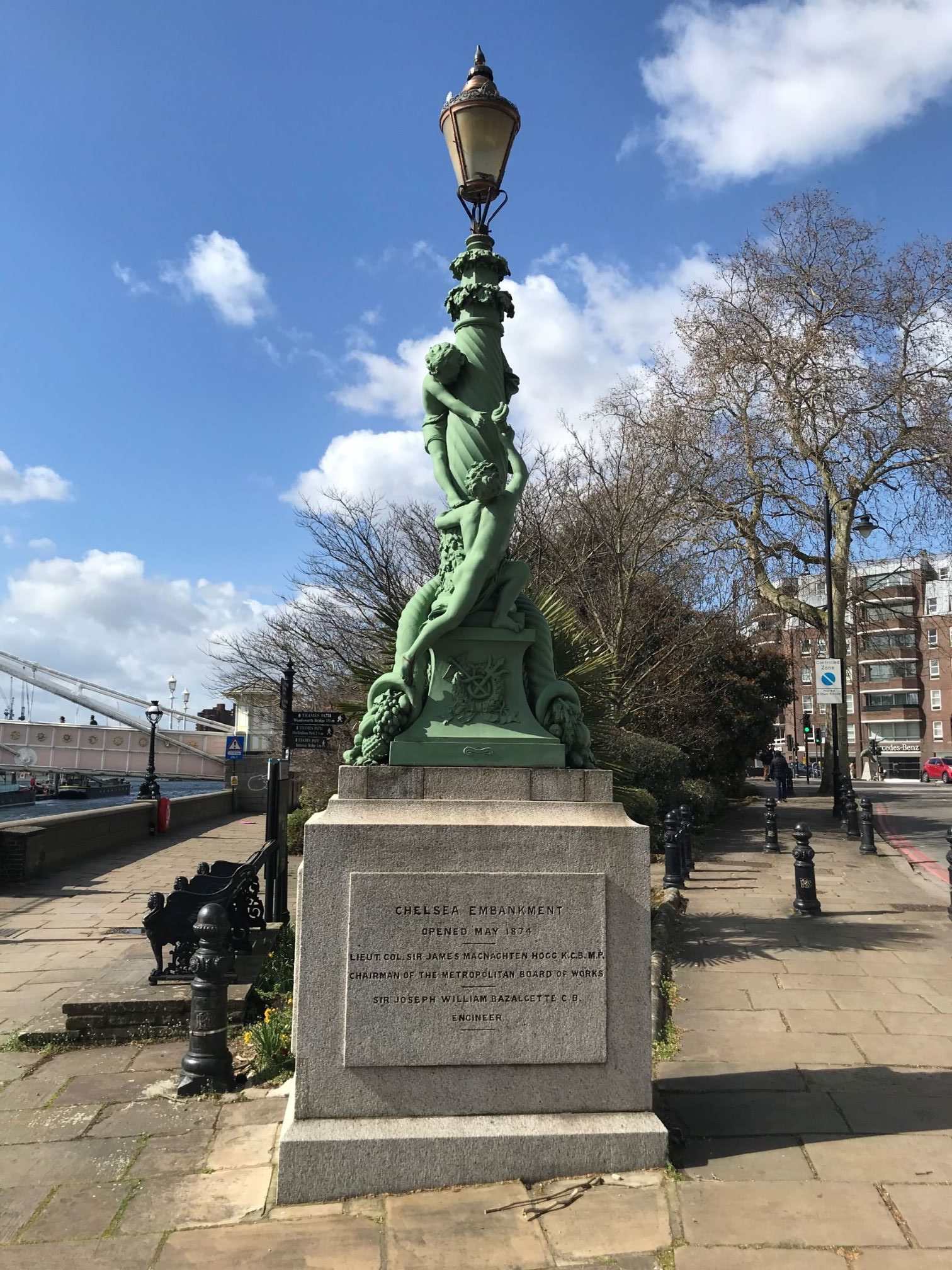
Memorial Lamp Post on Chelsea Embankment.
What we call the Embankment (officially the Victoria Embankment) between Westminster and Blackfriars Bridges was completed in 1871. In total, 3.5 miles of Embankment, 52 acres of land reclamation and 1300 miles of sewers and 82 miles of main interceptor sewer.
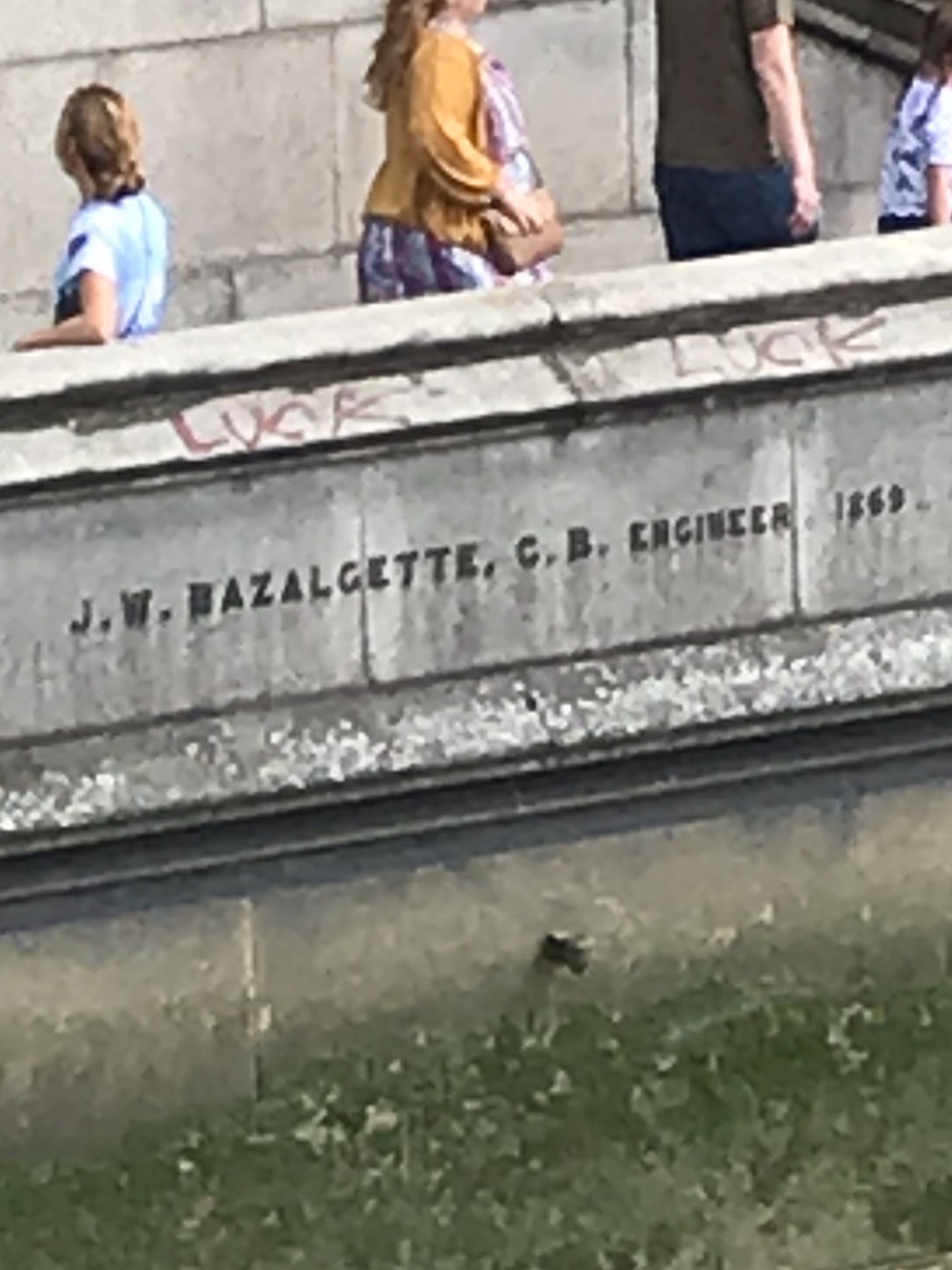
Joseph Bazalgette’s name on the Albert Embankment near Westminster Bridge
Perhaps Bazalgette’s real genius was that he deliberately over engineered. He worked out the size of pipe for the most densely populated part of the network and doubled it and then applied it across the network. He also used egg shaped tunnels, wide at the top to take the weight of the city. However, his insistence on checking and authorizing every detail himself once again took serious toll on his health.
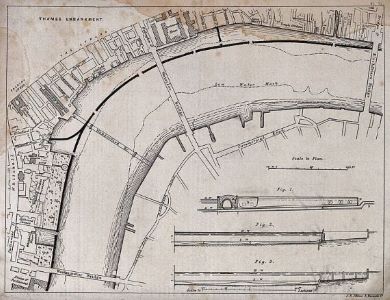
A plan of the Thames (Victoria) Embankment. Picture courtesy of WikiCommons
Other London Projects
But it is not just the sewage system, monumental though it was that we should remember this extraordinary man for. He initiated a programme of design and construction of several new thoroughfares to ease congestion in London, many of which are still familiar to us today. Southwark Street, Queen Victoria Street, Northumberland Avenue, Shaftesbury Avenue and Charing Cross Road all owe their existence to him.
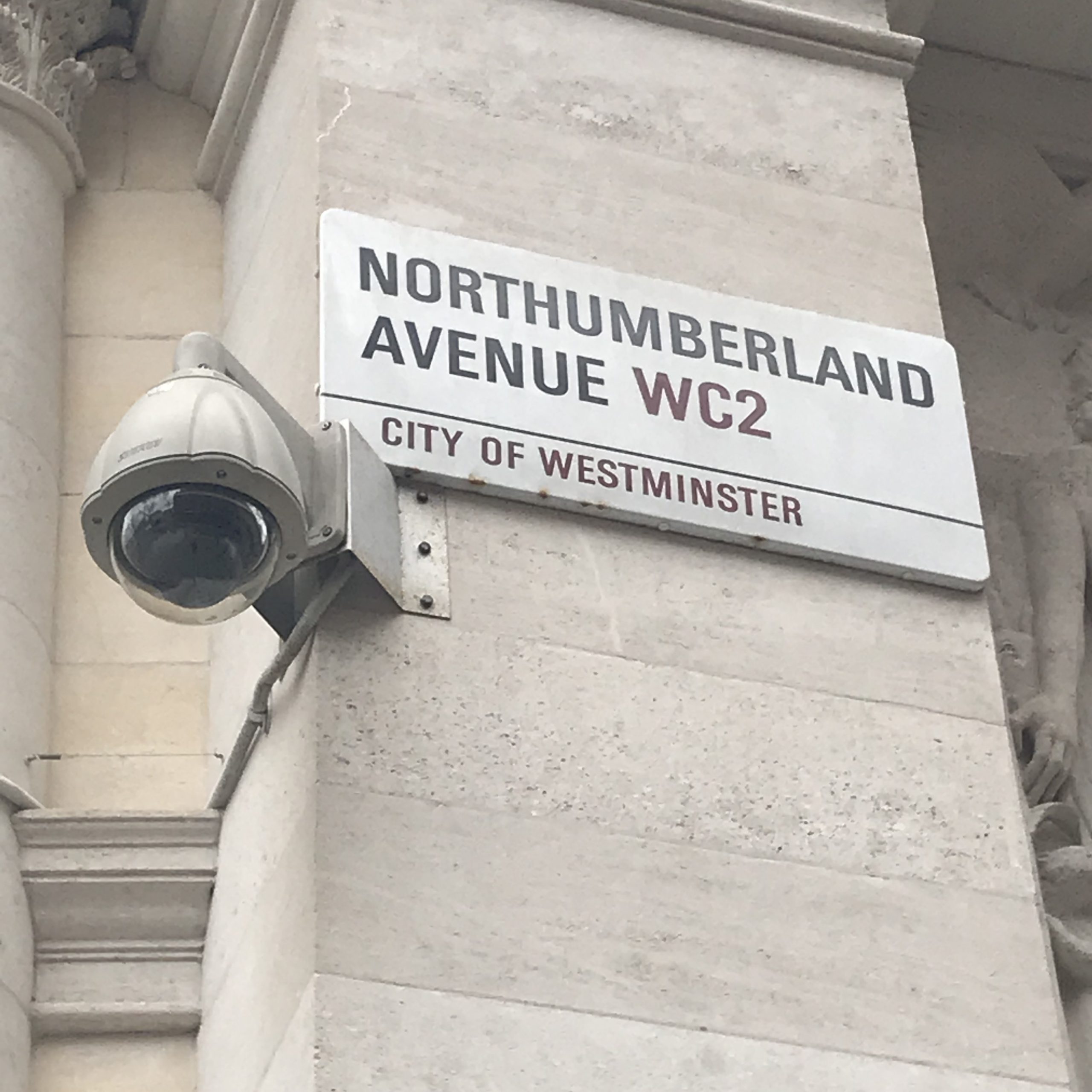
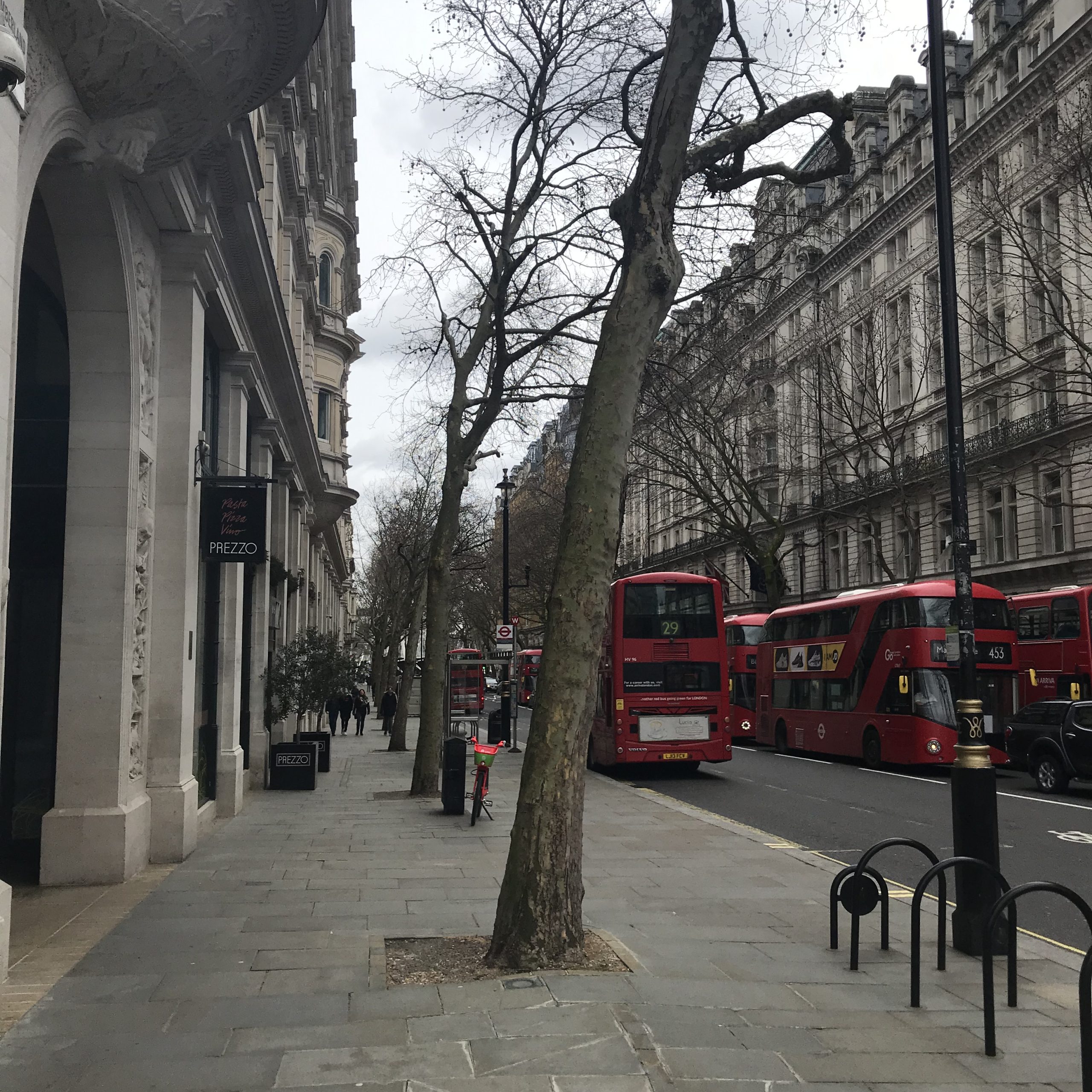

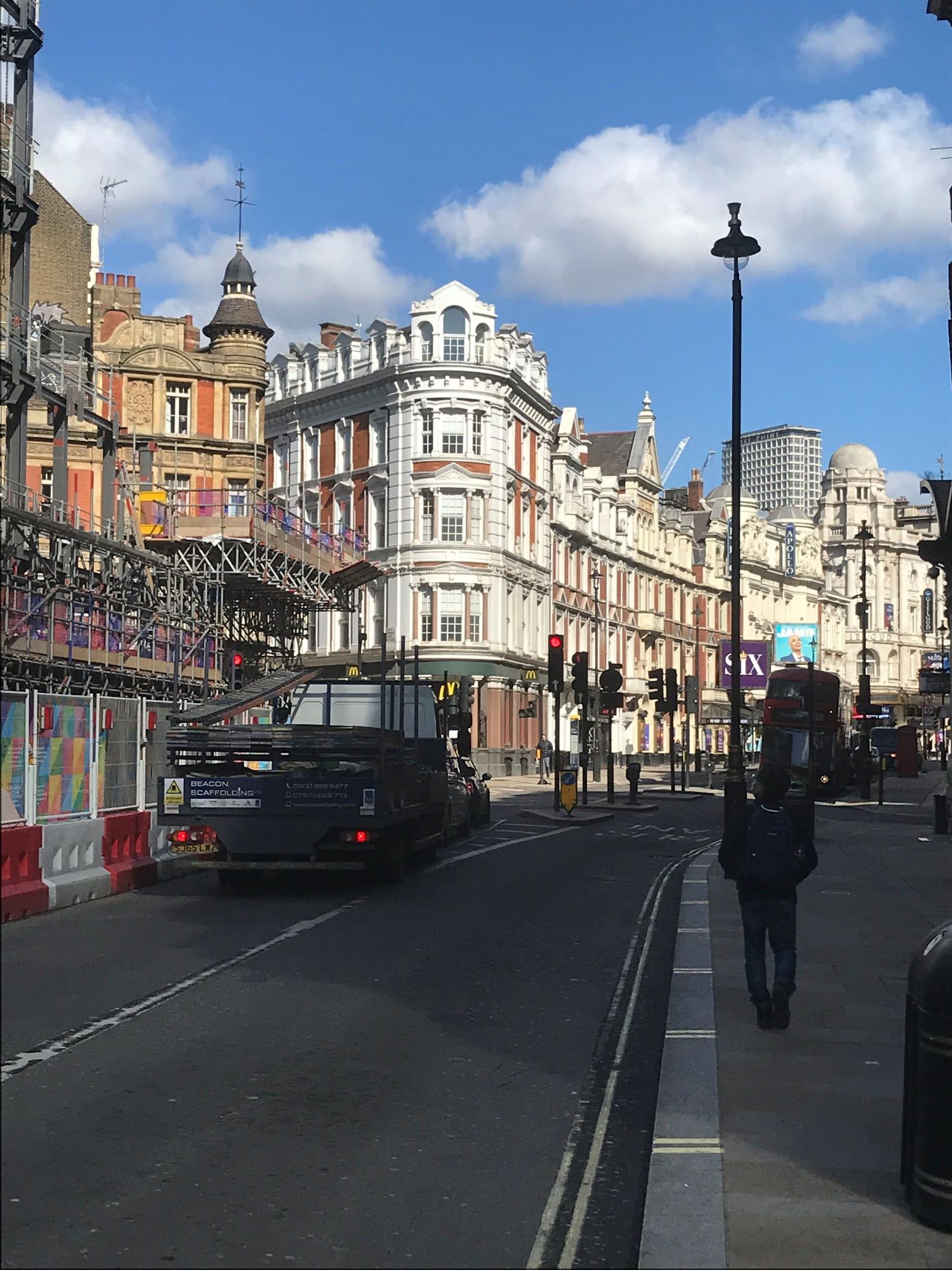
In 1877 the MBW was given the authority to purchase Thames bridges from private companies and make them toll free. Bazalgette had to survey twelve river crossings and subsequently much needed maintenance work was undertaken while he completely replaced three crossings with structures of his own.
Putney (1886)
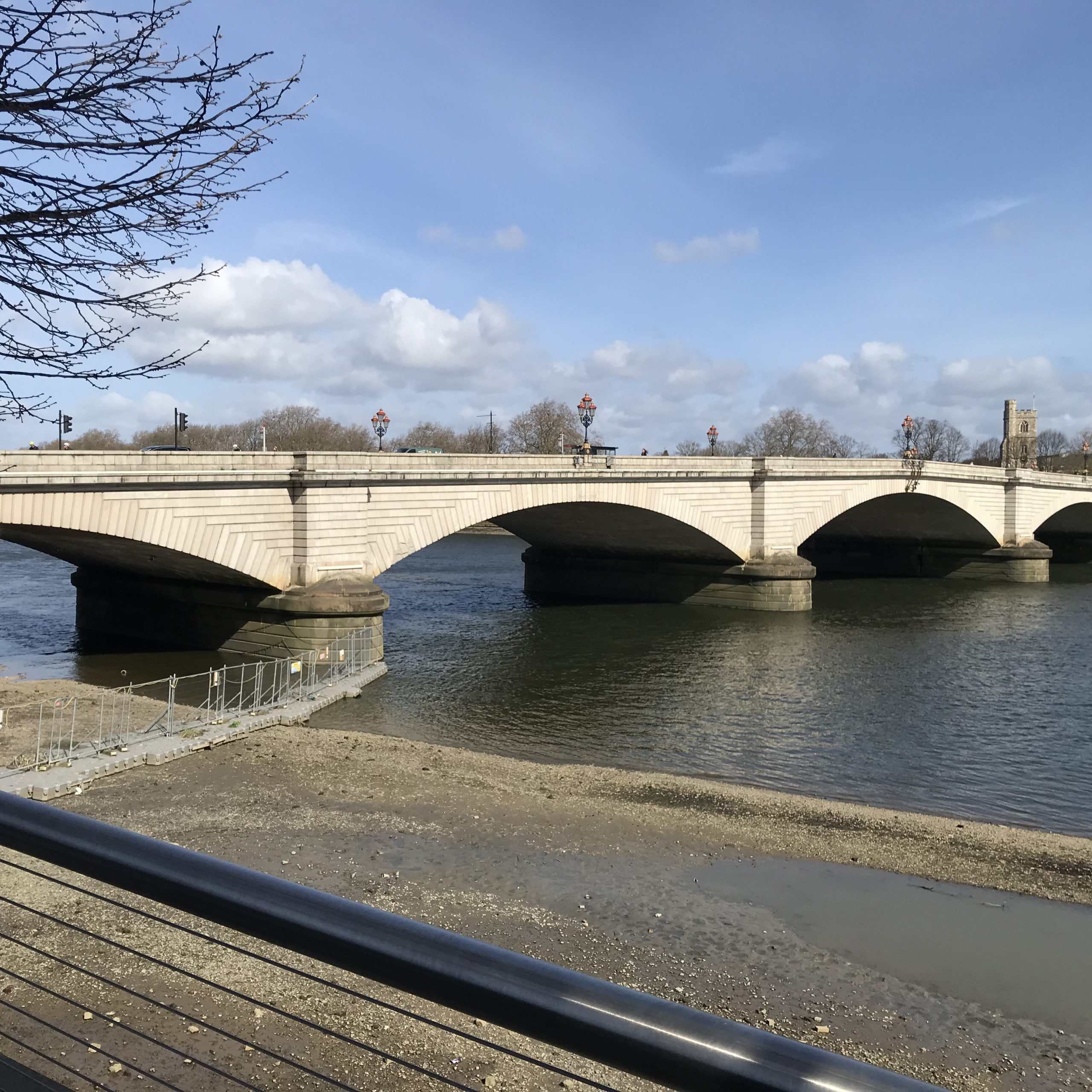
Battersea (1890)
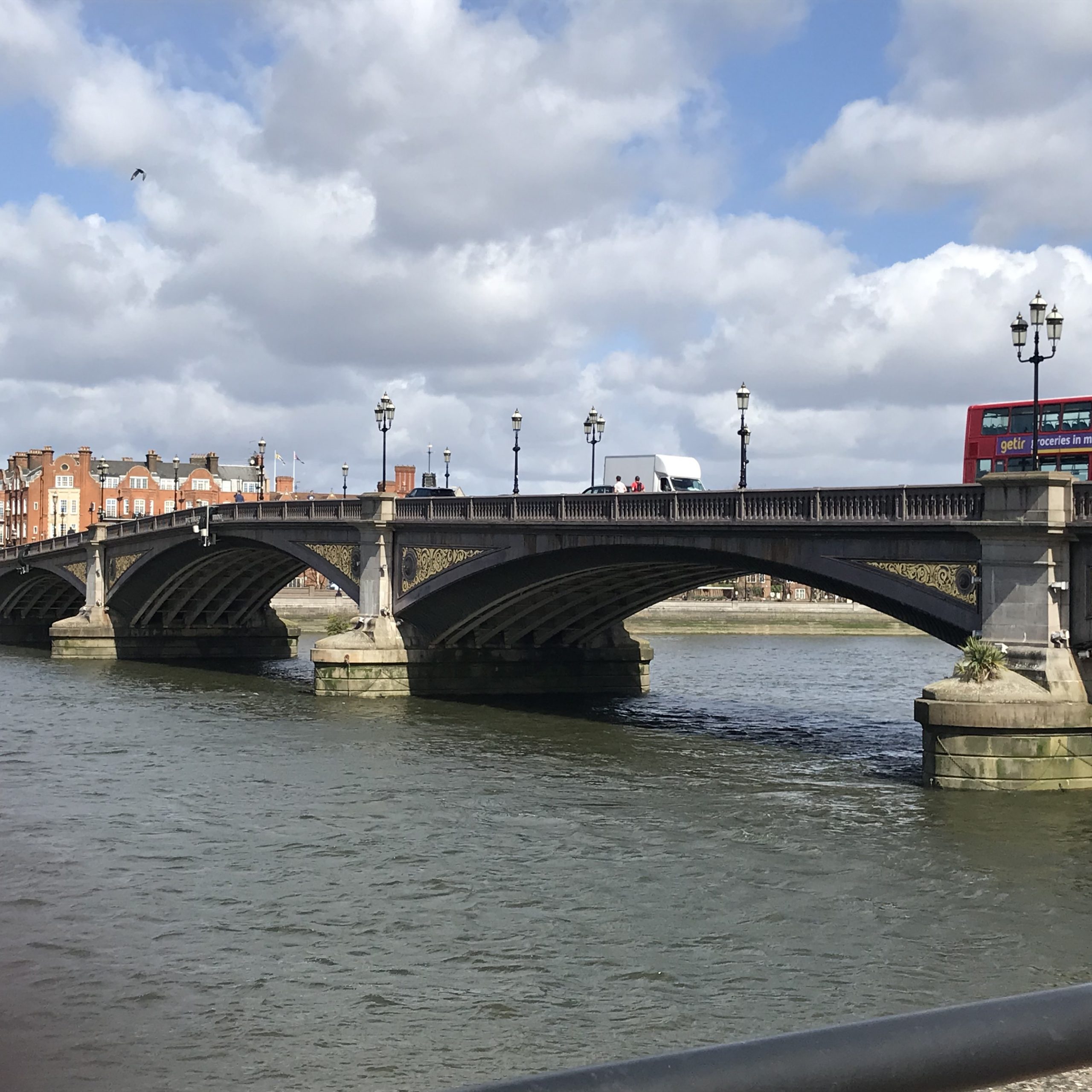
and my beloved Hammersmith Bridge (1887) (see Hammersmith Bridge | Bridgeman Tours ) are all his work.
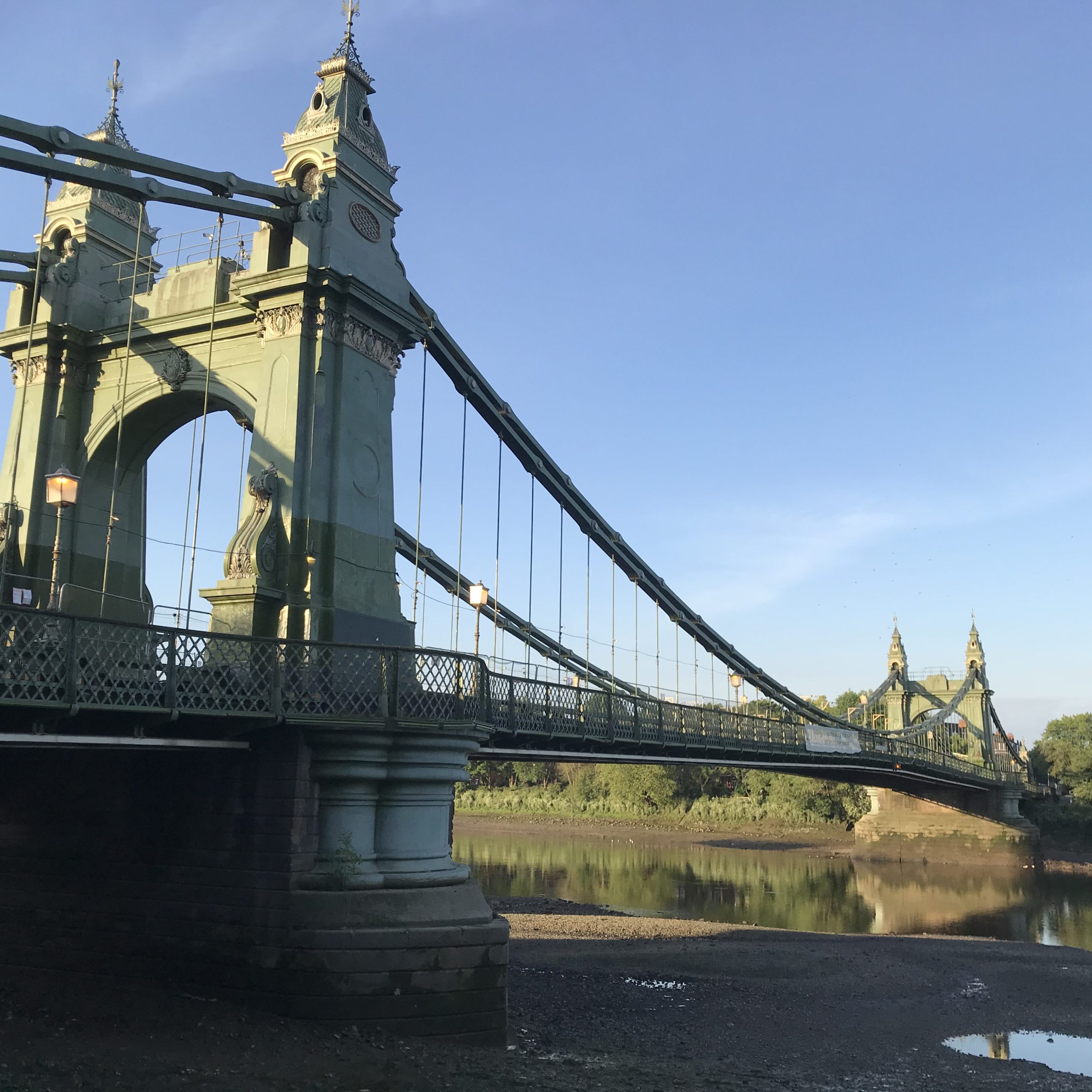
He also submitted a design of an innovative high level 850 feet span for the proposed new Tower Bridge crossing. The Woolwich Ferry was his last major contribution to London’s infrastructure but he also did work as a consulting engineer on the drainage and sewerage systems for many other towns including Oxford, Northampton, Margate and at Windsor Castle.
Knighted in 1874 and elected president of the Institute of Civil Engineers in 1884, he also served for many years as Churchwarden at St Mary’s Wimbledon, the place where he is buried after his death on 15 March 1891.
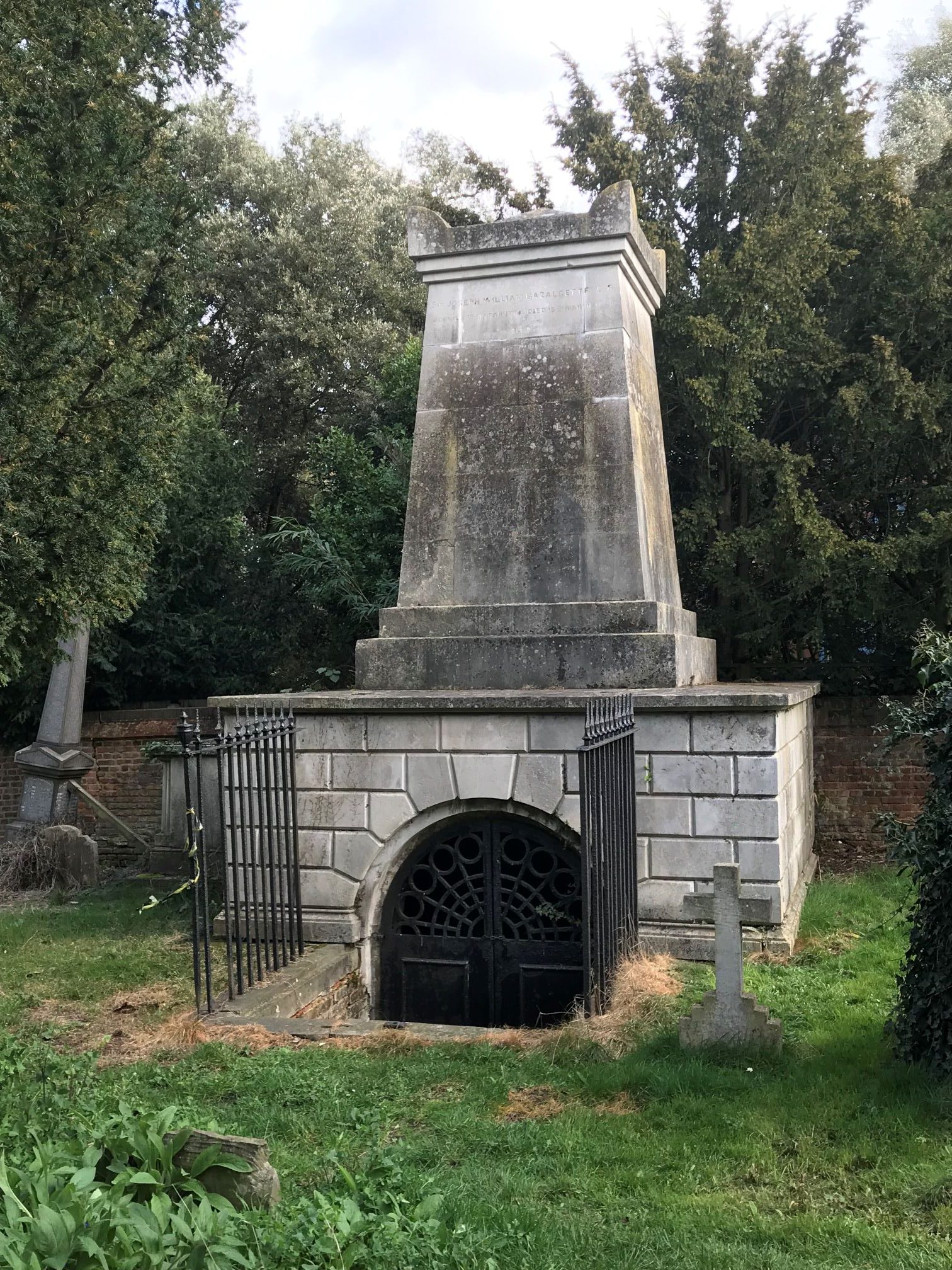
His splendid neo-classical tomb is one of few memorials to this great man (there is also a blue plaque at his home in St John’s Wood).
The most familiar memorial though is a small bust on the Thames Embankment at the junction with Northumberland Avenue that says on it ‘Flumini vincula posuit’ – he put the river in chains a truly fitting epitaph for a great if often overlooked man in London history.
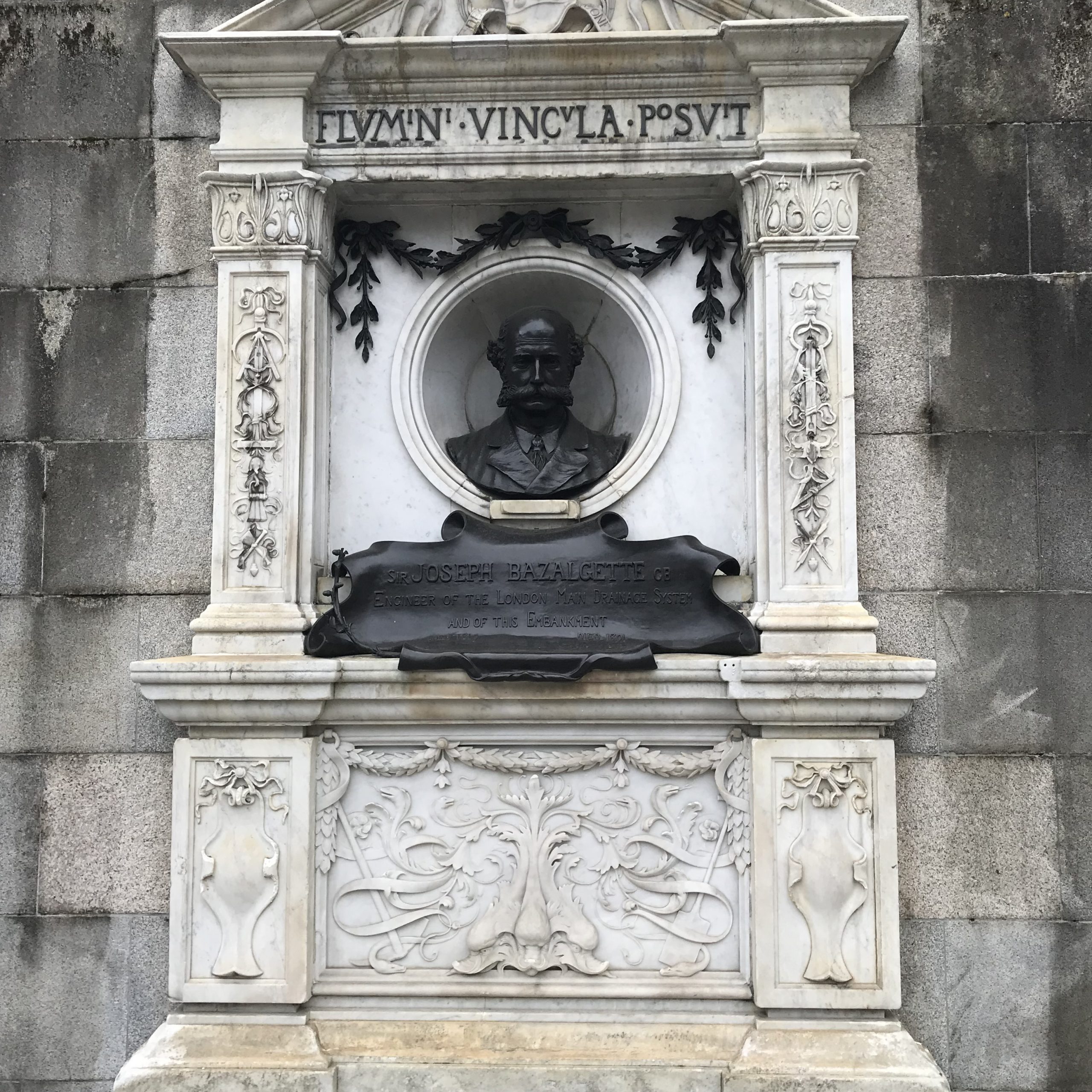
Thank you for reading.
best wishes.
Steve aka The Bridgeman
All photographs by the author unless otherwise stated. Copyright Steven Szymanski 2021
If you wish to know more information or want to be added to the blog mailing list then please contact me at stevenszymanskiguide@gmail.com.

